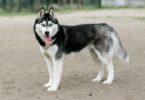Imagine coming home to a loyal companion whose expressive eyes and playful energy instantly lift your spirits. For many pet lovers, this vision becomes reality with a charming, compact breed known for its striking appearance and affectionate personality. Their sleek, jet-black coat and iconic “bat ears” make them stand out—but behind that adorable face lies a need for specialized care.
These dogs have surged in popularity across the U.S., captivating owners with their adaptability to apartment living and strong bond with families. However, their unique traits—like short snouts and sensitive skin—require attentive health management. Proper nutrition, regular vet checkups, and understanding their exercise limits are essential to ensuring a happy, thriving pet.
In this guide, you’ll learn practical strategies to support your furry friend’s wellbeing. From grooming tips for their glossy coat to recognizing early signs of common health concerns, we’ll cover everything you need. You’ll also discover insights into their lifespan, including factors that influence how long they live on average.
Whether you’re a first-time owner or looking to refine your care routine, this article offers reliable, easy-to-follow advice. Let’s ensure your four-legged family member enjoys the vibrant, healthy life they deserve.
Overview of the Black French Bulldog
The story of these compact canines begins in 19th-century England, where their ancestors worked alongside artisans. Industrial workers favored smaller versions of bulldogs as companions, sparking the breed’s early development. When lacemakers migrated to France during the Industrial Revolution, they brought these dogs, refining them into the beloved pets we know today.
Breed History and Evolution
French artisans prioritized unique features like upright “bat ears” through selective breeding. Early enthusiasts avoided crossbreeding with other varieties, preserving the breed’s distinct personality and structure. The solid black coat emerged later as a recessive genetic trait, requiring specific gene combinations from both parents.
Distinctive Traits Overview
Unlike lighter-coated counterparts, the solid-colored variety demands special attention to sun exposure due to pigment-related sensitivity. Their muscular build and trademark facial structure remain consistent across color variations. These dogs thrive in moderate climates and adapt well to indoor living, making them ideal for urban environments.
Unique Appearance and Coat Color Features
The allure of a monochromatic coat isn’t just about aesthetics—it’s a genetic marvel. This breed’s color variations range from creamy fawn to brindle patterns, but the solid shade stands apart. Its deep, even pigmentation creates a striking visual contrast against lighter-coated counterparts, drawing immediate attention in any setting.
Solid Black Coat Versus Other Variations
Unlike brindle or pied coats with mixed markings, the uniform hue lacks stripes or spots. Reputable breed organizations note this color often features a small white chest patch—a unique signature rather than a flaw. Photographic comparisons show how this coat absorbs light differently than fawn or cream shades, enhancing its glossy appearance.
Genetic studies reveal this coloration results from recessive genes requiring precise inheritance. While brindle patterns dominate the gene pool, achieving a true solid shade remains rare. Owners should note that coat color impacts sun sensitivity—darker pigments offer slightly better UV protection but still require summer precautions.
Breeders emphasize responsible pairing to maintain healthy skin beneath the dense fur. Whether you prefer the dramatic solid look or playful patterns, understanding these distinctions helps appreciate each variation’s unique charm.
Essential Care Tips for Your Black French Bulldog
Establishing a consistent daily routine is key to keeping your four-legged friend healthy and happy. These compact companions thrive on predictability, which supports both physical health and emotional wellbeing. Structured care starting from the puppy stage helps maintain their glossy coat and prevents common issues linked to their unique build.
Daily Care Essentials
Puppies benefit from three small meals daily using shallow bowls that accommodate their facial structure. Breeders recommend high-quality proteins and omega fatty acids to nourish skin and coat health. Avoid overfeeding—measured portions prevent weight-related stress on joints.
Short morning and evening walks work best for temperature-sensitive pets. Interactive puzzle toys provide mental stimulation between outdoor activities. Always carry water during outings to prevent dehydration during play sessions.
Weekly brushing removes loose hair and distributes natural oils for shine. Clean facial folds gently with vet-approved wipes to avoid irritation. Early socialization exposes puppies to diverse sounds and environments, building confidence through positive experiences.
Create a balanced schedule mixing 20-minute play blocks with nap times. Puppies need 18-20 hours of sleep daily for proper development. Consistent bedtimes and wake-up times reinforce stability as your pet ages.
Health Considerations and Genetic Factors
Genetic factors play a pivotal role in ensuring a pet’s long-term wellbeing. While their compact size and distinctive features make them endearing, these traits also correlate with specific health vulnerabilities. Awareness and proactive management help owners navigate potential challenges effectively.
Common Health Concerns
Brachycephalic syndrome tops the list of breed-specific issues due to shortened airways. Skin allergies and spinal abnormalities also rank high, particularly in dogs with dense coats. Reputable breeders prioritize testing for conditions like hip dysplasia and hereditary cataracts during pairing decisions.
Genetic Health Screening
Ethical breeding programs use DNA tests to identify carriers of problematic genes. Many offer written health guarantees covering congenital defects for up to two years. These agreements reflect adherence to strict breed standards that prioritize vitality over cosmetic traits.
Responsible breeding practices minimize risks by avoiding close relative pairings. Breeders often share full panel test results with buyers, demonstrating transparency. Regular screenings throughout a dog’s life help catch issues early, aligning with veterinary recommendations for at-risk breeds.
Feeding, Exercise, and Daily Routine
Balanced nutrition and structured activities form the foundation of a thriving pet’s life. Start with high-quality kibble containing 20-25% protein to support muscle tone and energy levels. Mix in omega-rich supplements like fish oil to maintain coat health—especially important for darker-coated breeds.
Tailor exercise to moderate energy needs with two 15-minute walks daily. Avoid intense midday heat—their compact build makes temperature regulation challenging. Interactive games like treat puzzles keep them mentally sharp while burning calories.
A consistent schedule nurtures their friendly personality and strengthens bonds with owners. Feed meals at the same times each day to regulate digestion. Reserve post-meal hours for calm activities to prevent stomach discomfort.
Watch for behavioral changes like reduced playfulness or appetite shifts—these often signal health issues. Owners should track water intake and energy patterns using a simple journal. Adjust routines gradually if needed, as sudden changes can stress sensitive pets.
Integrate care into family life by designating feeding zones and walk times. Involve household members in play sessions to distribute attention evenly. This approach ensures your companion stays healthy while fitting seamlessly into your lifestyle.
Training and Behavior for French Bulldogs
Building trust through thoughtful guidance helps shape a confident, well-adjusted companion. These compact dogs love interactive learning, responding best to methods that align with their social nature. Training strengthens bonds while addressing breed-specific tendencies like stubbornness or sensitivity to tone.
Positive Reinforcement Techniques
Reward-based methods work wonders for this affectionate breed. Treats, praise, or playtime after desired actions make learning enjoyable. Experts recommend keeping sessions under 10 minutes to match their attention span.
Clicker training helps mark precise moments of success. For example, clicking when they sit teaches clear cause-effect relationships. Avoid harsh corrections—these sensitive dogs thrive on encouragement.
Socialization and Play Strategies
Introduce new people and pets gradually using controlled environments. Puppy classes provide safe spaces to practice polite greetings. Pair meetups with favorite toys to create positive associations.
Interactive games like hide-and-seek reinforce recall skills. Tug-of-war with rules (“drop it” commands) channels energy constructively. Their love for human interaction makes cooperative play particularly effective.
Establish routines by scheduling training before meals when motivation peaks. End each session with a calming activity like gentle brushing. Consistency helps these friendly companions understand expectations while deepening mutual trust through daily shared moments.
Puppy Selection and Reputable Breeder Insights
Selecting a puppy involves more than admiring their playful charm—it requires careful evaluation of their health history and upbringing. Ethical breeders prioritize transparency, offering documentation like genetic test results and vaccination records. Start by researching professionals registered with national kennel clubs, as these organizations enforce strict breeding standards.
Identifying Trustworthy Breeders
Reputable sources provide written health guarantees covering hereditary conditions for 1-2 years. Ask about parental health screenings and socialization practices during your first conversation. Many ethical breeders conduct early neurological stimulation exercises with available puppies to boost resilience.
Pricing for rare colors often reflects breeding complexity and demand. Expect detailed contracts outlining spay/neuter agreements and return policies. Visit facilities personally or request virtual tours to assess living conditions—clean environments and visible parent-dog interactions signal responsible practices.
Review pedigrees to confirm lineage authenticity, avoiding sellers who can’t trace ancestry. Breeders should explain feeding routines and answer behavioral questions thoroughly. Post-adoption support like training resources demonstrates commitment beyond the sale, ensuring your new companion thrives in their forever home.
Rarity, Cost, and Market Trends
Market dynamics reveal fascinating insights into why certain pets command premium prices. Solid-coated varieties often cost 30-50% more than brindle counterparts, reflecting their genetic scarcity. Breeders invest years cultivating specific traits through selective pairings, directly impacting availability.
Understanding Price Variations
Coat color genetics play a starring role in pricing structures. Achieving a uniform shade requires both parents to carry recessive genes—a rare alignment occurring in only 15% of litters. Data tables from 2023 kennel club registrations show solid-colored puppies represent just 8% of annual births nationwide.
Demand outstrips supply in urban markets, particularly coastal cities where unique appearances drive trends. Ethical breeders factor health testing and pedigree documentation into pricing, unlike backyard sellers prioritizing quick profits over canine welfare.
Investment Considerations
Prospective owners should budget beyond the initial purchase. Veterinary estimates show lifetime care costs often triple the adoption price for brachycephalic breeds. Prioritize breeders offering health guarantees over those emphasizing rare coat marketing.
Compare seller transparency through questions about genetic screenings and parental lineage. While striking appearances captivate attention, responsible investment means valuing long-term wellbeing over fleeting aesthetic trends. Partner with professionals who prioritize temperament and vitality in their breeding programs.
Family Life with French Bulldogs
From cozy studios to sprawling suburban homes, these compact companions demonstrate remarkable adaptability. Their moderate energy levels and affectionate nature make them ideal for diverse households. Whether climbing stairs in a townhouse or lounging in a backyard, they prioritize human connection over space requirements.
Adapting to Home Environments
Frenchies thrive in apartments due to low exercise needs but equally enjoy houses with secure yards. Their sturdy build handles playtime with children gracefully, though supervision ensures gentle interactions. Many families report their pets naturally adjust to work-from-home schedules or bustling school routines.
Testimonials highlight how the breed’s patience shines during toddler encounters. One owner shared how their fawn-colored Frenchie became a calming presence during homework sessions. Others note their adaptability to multi-pet households when introduced properly.
Create designated rest areas away from high-traffic zones to prevent overstimulation. Use baby gates to establish safe boundaries in open-concept homes. Consistent meal times and walk schedules help these sensitive pets feel secure amid changing family dynamics.
Their variety of coat colors adds visual charm to family photos while requiring no extra maintenance. Brindle or pied frenchies often become conversation starters during neighborhood walks. Regardless of hue, their loyalty remains constant—always ready to curl up beside you after a busy day.
Maintain harmony by involving all family members in care tasks. Simple routines like group playtime or shared feeding duties strengthen bonds. This collaborative approach ensures everyone contributes to the pet’s wellbeing while enjoying their comical antics and unwavering devotion.
Unique Facts and Historical Insights
Did you know these compact canines once rubbed shoulders with royalty and rebels alike? Their journey from rat-catching companions to fashion icons reveals surprising twists. These important facts about their past explain why they remain beloved today.
Anecdotes and Origin Stories
In 1897, a wealthy American nearly sank a ship to save her dogs during a transatlantic voyage. This dramatic event highlights how people cherished them even in early breed history. Parisian café owners later adopted them as mascots, fueling their association with bohemian culture.
Historical records show they comforted lacemakers during long work hours. Their calm demeanor made them ideal companions for artisans. This bond with working-class people shaped their reputation as adaptable, loyal pets.
Evolution of Coat Colors
Early breed standards favored brindle patterns until rare color mutations gained attention. Breeders noticed solid coats appeared when both parents carried recessive genes. This discovery transformed preferences, though striped varieties remained common until the 1930s.
Modern genetic research explains why certain colors require careful breeding. The unique appearance of darker coats became linked to urban sophistication over time. Today’s care practices still reflect historical choices—like using sunscreen for light-sensitive pets.
Expert Care Guides and Health Guarantees
Professional care commitments bridge the gap between breeder expertise and owner responsibility. Reputable sources provide detailed care manuals covering nutrition, exercise limits, and skin protection for the black frenchie. These guidelines address breed-specific needs while promoting overall wellness through every life stage.
Genetic testing forms the foundation of reliable health guarantees. Leading breeders screen for 200+ hereditary conditions common in the bulldog breed, sharing results with buyers. Many offer warranties covering congenital issues for two years—a testament to their confidence in responsible breeding practices.
Top canine organizations recommend annual vet partnerships for brachycephalic dog breeds. This includes airway assessments and allergy management plans tailored to individual pets. Proactive care reduces emergency visits and helps owners anticipate needs like temperature-controlled travel services.
Lifelong support often includes breeder check-ins and access to specialist networks. Some provide tailored diet plans or discounted wellness packages. This integrated approach ensures continuity from the kennel to your home, aligning with modern standards for ethical pet ownership.
By combining scientific rigor with practical advice, these frameworks empower owners of popular dog breeds. Whether managing seasonal allergies or planning safe vacations, expert-backed strategies keep companions thriving for years.
Grooming, Coat Maintenance, and Styling Tips
Maintaining a sleek coat requires more than occasional brushing—it’s about understanding your pet’s unique needs. Regular care prevents matting, reduces shedding, and keeps skin healthy. Start with a weekly routine that adapts to seasonal changes and your companion’s activity level.
Recommended Grooming Practices
Use a rubber curry brush to massage the skin and lift loose hairs on short coats. This stimulates natural oils for a glossy finish. For pets with subtle fawn markings, a soft-bristle brush highlights color contrast without irritation.
Bathe every 4-6 weeks using oatmeal-based shampoo. Focus on facial folds and tail pockets where dirt accumulates. Dry thoroughly with a microfiber towel—dampness can cause rashes in skin creases.
Trim nails monthly to prevent overgrowth affecting posture. Pair grooming sessions with treats to create positive associations. Those with darker coats might benefit from UV-protectant sprays during summer walks.
Choose tools wisely:
– Slicker brushes for stubborn shed hairs
– Dental wipes for breath freshness
– Detangling sprays for occasional adventures in mud
Styling should prioritize comfort. A neatly trimmed belly cut helps active dogs stay cool. For special occasions, hypoallergenic bandanas add flair without restricting movement. Owners of dark-coated pets can learn more about coat care for dark-coated through specialized guides.
Closing Reflections on Your French Bulldog Journey
The path to a thriving pet partnership lies in understanding their distinct needs and rich heritage. By prioritizing balanced nutrition, tailored exercise, and regular vet care, you create a foundation for lifelong health. These dogs thrive when their unique traits—like energy management and skin care—guide daily routines.
Integrating them into family life offers rewards beyond measure. Their adaptability shines in homes with children, where gentle play and cozy naps become cherished rituals. Families who invest time in learning their history gain deeper appreciation for those signature ears and expressive eyes.
Remember, a happy pet balances activity with affection. Short walks, puzzle toys, and consistent grooming sessions strengthen your bond while meeting physical needs. Every moment spent caring for them deepens trust, turning daily tasks into acts of love.
As you navigate this journey, let curiosity about their past inform your present choices. The loyalty these dogs offer isn’t just companionship—it’s a shared story written through years of mutual care. Here’s to the adventures ahead, filled with wagging tails and heartwarming connection.
FAQ
Are solid black coats common in this breed?
Pure black coats are rare due to strict genetic standards. Most dogs labeled “black” have subtle brindle patterns visible under sunlight. Reputable breeders use DNA testing to verify coat genetics.
What health screenings should owners prioritize?
Brachycephalic syndrome, hip dysplasia, and hereditary cataracts are key concerns. Request OFA certifications for joints and a vet-reviewed respiratory health plan during puppy selection.
How much exercise do these dogs require daily?
Moderate activity—20–30 minutes of walks or play—is sufficient. Avoid overheating due to their short snouts, and prioritize indoor games during extreme weather.
Why do some puppies cost significantly more than others?
Pricing reflects lineage verification, health guarantees, and rare color genetics. AKC-registered litters with champion bloodlines often command higher prices, while non-standard coats may lack breed approval.










Leave a Comment